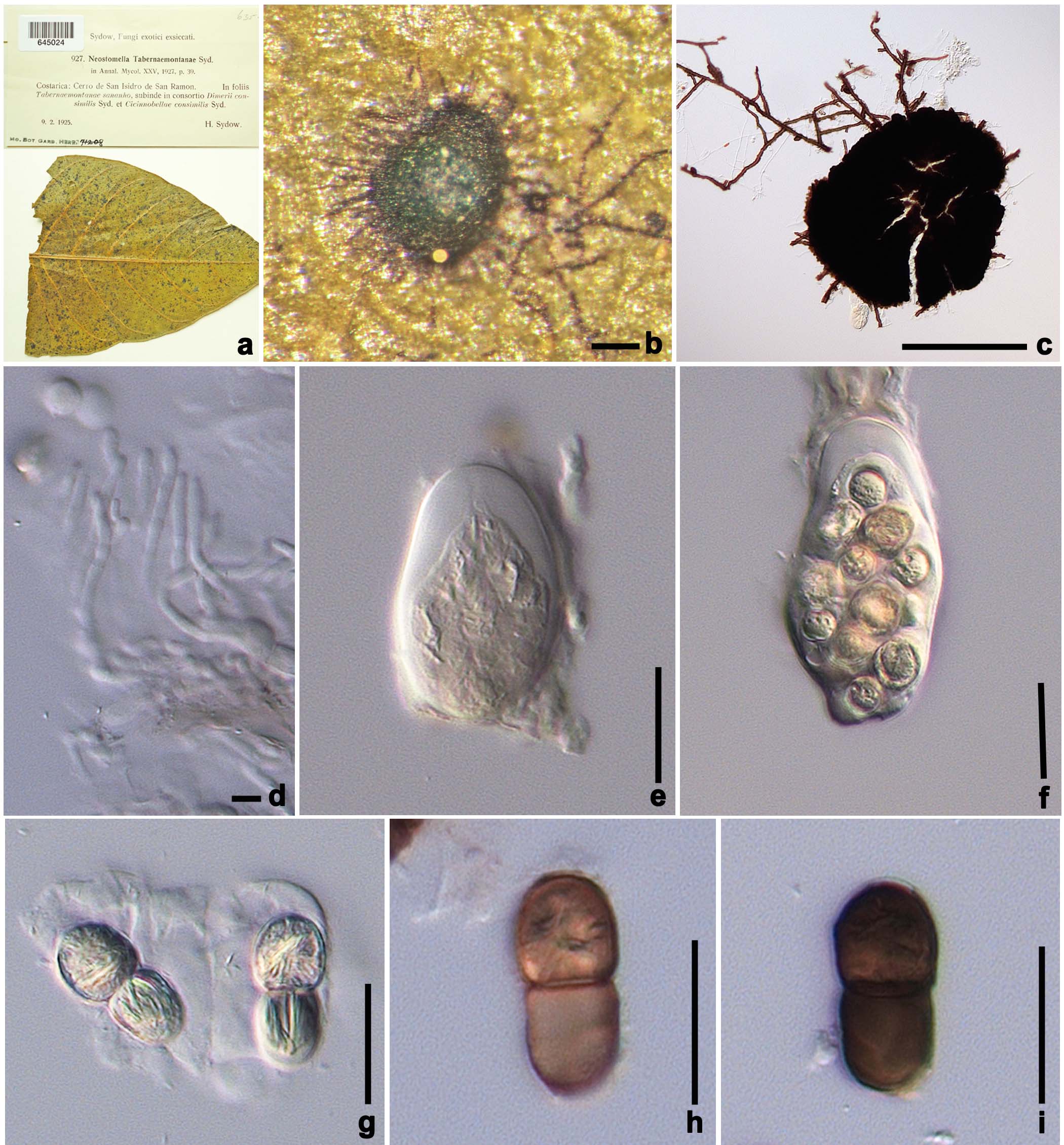Asterina tabernaemontanae (Syd.) Hongsanan & KD Hyde, comb. nov. Index Fungorum: IF550712.
≡ Neostomella tabernaemontanae Syd., Annls mycol. 25(1/2): 30 (1927)
Type: S-F10300, syntype; S-F10302, syntype; BPI 645023, isotype; S-F64188, syntype; − syntype and isotype are in poor condition, BPI-645024 (lectotype designated here).
Epiphytes on the lower surface, forming blackened irregular areas. Superficial hyphae abundant, brown-black, spreading over the host surface. Appressoria 14–18×8.5–10μm, abundant, knob-like, oval to subglobose, lateral and alternate, reddish-brown, sparsely septate. Sexual state: Thyriothecia 242–357μm diam., solitary, scattered, superficial, circular, flattened, convex at the centre, black, with basal peridium poorly developed, with central dehiscing ostiole. Upper wall comprising dark irregular opaque radiating cells, surrounded by septate, radiating hyphae. Hamathecium of 2–3μm wide, hyaline, branched, septate pseudoparaphyses. Asci 40–72× 34–52μm (x = 60×42μm, n=10), 8-spored, bitunicate, subglobose, clavate-ovoid, apical region of asci usually with a thick opaque region. Ascospores 23–29.5×11–15μm (x = 27×13μm, n=10), 2–3-seriate in the ascus, ovalellipsoid, 1-septate, constricted at the septum, hyaline when immature, becoming brown to dark brown at maturity, smooth-walled. Asexual state: Unknown.
Material examined: COSTA RICA, Alajuela, Cerro de San I s i d r o , ne a r San Ramon, on l e a v e s of
Tabernaemontana sananho Ruiz & Pav. (Apocynaceae), 9 February 1925, H. Sydow, Sydow Fungi Exotici Exsiccati 927 (BPI-645024, lectotype designated here).
Notes: Y.M. Li examined all type specimens from S and could not find asci or ascospores. S. Boonmee examined isotype BPI 645023 which was in poor condition, and isotype BPI 645024 which was in good condition with pseudoparaphyses, asci and ascospores and we designate this as lectotype which is illustrated in Fig. 1. The genus Neostomella has characteristics similar to Asterina species, and thus we synonymize Neostomella under Asterina based on morphology.
Fig. 1 Asterina tabernaemontanae (lectotype). a Material label and specimen. b Thyriothecium. c Squash mount of thyriothecium showing peridial wall and mycelia with appressoria. d Pseudoparaphyses. e, f Immature and mature asci. g–i Immature and mature ascospores. Scale bars: a=Label, b=500μm, c=200μm, d=5μm, e, f=50μm, g–i=20μm

